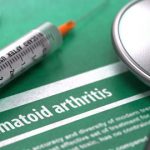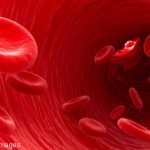These treatments are not just a different type of molecule; they are a cell-based therapy. They have the potential for extreme specificity—both in terms of disease/antigen specificity and patient specificity—because they use autologous T cells. This player-to-player defense may dramatically lower the personal fouls associated with the treatment of rheumatic diseases. Their theoretical ability to target fibroblast populations may also lead to breakthroughs in treating patients with fibrosing disorders, including but not limited to interstitial lung disease and systemic sclerosis, for which current therapeutic options are limited.
The prospect of using CAR-T cells for the treatment of rheumatic diseases raises several exciting questions. Will this therapeutic potential dramatically accelerate antigen discovery in the same way monoclonal antibodies spurred our understanding of the role of cytokines/cytokine networks in different diseases and facilitate clinicopathologic correlation between these antigens and disease phenotype? How can CAR-T cell therapy team up with other therapies, such as conventional synthetic and/or biologic DMARDs? Will adverse effects, such as the risk of cytokine release syndrome or immunosuppression, prove intolerable to patients with rheumatic diseases? Other questions, such as how this technology will change the landscape of insurance approval if adopted across the league, are more technical but perhaps equally important.
Chances in the Tournament
Due to its novelty and marked potential for clinical impact in the near future, the CAR-T Cells team will likely be a crowd favorite in RheumMadness 2022. CAR-T cells could lead to a paradigm shift in the treatment of rheumatic diseases, running a fast-break beyond cytokine- and antimetabolite-based treatment regimens and making a lay-up toward a therapy that selectively targets and slam dunks disease-causing cells while sparing others.
Although the first-round opponent, Pim Kinases, also represents a therapeutic target in oncology that may be repurposed in rheumatology, CAR-T cells are more unlike our current therapies, have a broader role in oncology treatment than Pim kinase inhibitors and have been shown to be a game-winning play in a patient with severe, refractory SLE. And let’s face it—CAR-T cells are cool and exactly the type of topic that excites rheumatologists.
We believe the Blue Ribbon Panel will appreciate this innovative treatment, even in comparison with the other, better-known categories in the Cells Region. Whether CAR-T Cells will beat some of the more immediately, clinically relevant topics in the Machines and People regions will depend on how the panel weighs the time it will take for CAR-T cells to reach clinical use. With the potential to treat so many of our diseases in which current therapeutic options remain inadequate, CAR-T cells is a worthy competitor against any other team in this year’s bracket.



